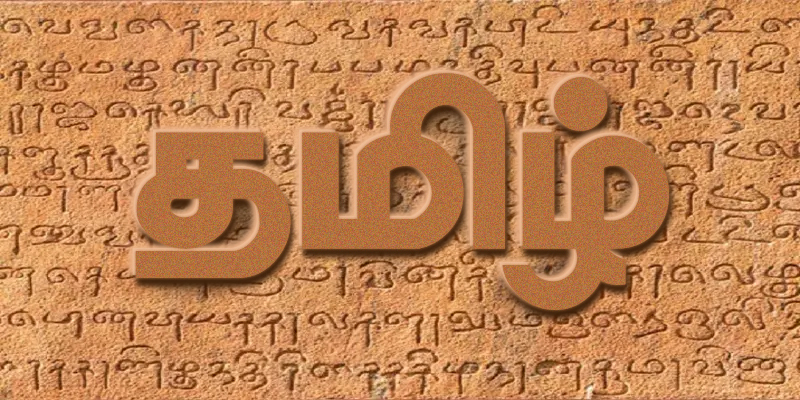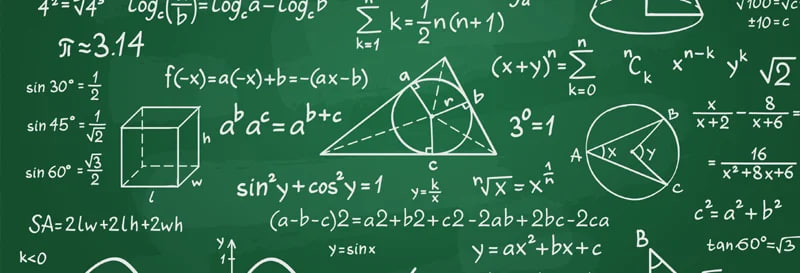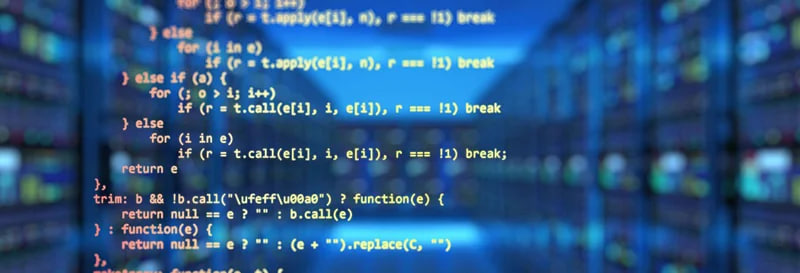
தமிழ் கற்பித்தலின் அடிப்படை, விழுமம் (ஒழுக்கநெறி, சமுதாயமேன்மை, இறையுணர்வு) குறிக்கோள்களும் நோக்கங்களும்: கற்பித்தலுக்கானநோக்கங்கள் மற்றும் நடத்தைக்கானநோக்கங்கள் - தமிழ் கற்பித்தலின் தேவை, முக்கியத்துவம் - கற்பித்தலுக்கானபுளுமின் வகைமைநெறி: அறிவுக்களம், உணர்தல் களம் உளஇயக்கசார் களம் - திருத்தப்பட்டபுளுமின் வகைமைநெறி 2001(ஆண்டர்சன் &கிரத்வால்) களங்களுக்கு இடையேயானதொடர்பு, பாடங்களுக்கு இடையேயானதொடர்பு.
நுண்ணிலைக் கற்பித்தல்: பொருள்,வரையறை படிநிலைகள் - சுழற்சி - தொடங்குதல் திறன், விளக்குதல் திறன், வினாக்கேட்டல் திறன்,பல்வகைத்தூண்டல் திறன், வலுவூட்டிகளைப் பயன்படுத்தும் திறன், கரும்பலகையைப் பயன்படுத்தும் திறன், முடிக்கும் திறன்,உற்றுநோக்கல், இணைப்புப்பாடம், நுண்ணிலைக் கற்பித்தலுக்கும் வகுப்பறைக் கற்பித்தலுக்கும் இடையேயானவேறுபாடு-பாடநிகழ்வு.
பாடம் கற்பிப்புத் திட்டத்தின் அணுகுமுறைகள், இன்றியமையாமை- பாடம் கற்பித்தலின் படிநிலைகள் கற்பித்தலைஒழுங்கமைத்தல்: நினைவகநிலை (ஹெர்பார்டியன் மாதிரி), புரிதல் நிலை (மோரிசன் கற்பித்தல் மாதிரி),பிரதிபலிப்புநிலை (பிக்கி&ஹண்ட் கற்பித்தல் மாதிரி) பாடம் கற்பித்தலுக்கான நோக்கங்களை வரையறுத்தல் - பாடம் கற்பிப்புத் திட்டம் தயாரித்தல் - அலகுத்திட்டம் - அலகுத்திட்டம் தயாரித்தல்.
ஆசிரியர் மையக் கற்பித்தல்: விரிவுரைமுறை - பகுத்தறிமுறை, தொகுத்தறிமுறை, விதிவருமுறை மற்றும் விதிவிலக்கமுறை - செயல்விளக்கமுறை - மாணவர் மையக் கற்பித்தல்: கருத்தரங்கம் - பட்டிமன்றம் - குழு விவாதம் - குழு கற்பித்தல் முறை - இடைவினையாற்றகற்றல், கெல்லர் திட்டம் - செயல்வழிக்கற்றல் - படைப்பாற்றல் கல்வி - மனவரைபடம் - கூடுதல் படைப்பாற்றல் கல்வி.
கற்பித்தல் ஊடகவகைப்பாடு - வகுப்பறைக் கற்பித்தலில் ஊடகத்தின் பயன்பாடு - அண்மைக் காலகற்பித்தல் போக்குகள்:மின்-கற்றல் - விண்ணரங்கம் - தகவல் தொடர்புசெயற்கைக்கோள் - மொழிபயிற்றாய்வுக்கூடம், செயற்கைநுண்ணறிவு (Artificial Intelligence, மெய்நிகர் தோற்றம் (Augmented reality) - இணைத்துக் கற்றல் (Blended Learning) - இணைய நூலகம் இணைப்பு நிஜமாக்கம் (Virtual reality).

Meaning, Nature, Scope, Need and Significance, Values, Aims and Objectives: Instructional objectives and Behavioural Objectives – Need and Importance of Instructional Objectives. Bloom’s Taxonomy of Instructional Objectives: Cognitive, Affective and Psychomotor Domains, Revised Bloom’s Taxonomy 2001 (Anderson & Krathwohl) Interrelation among the domains – Correlation between subjects.
Micro-Teaching : Concept, Definition, Steps, Cycle - Micro-teaching Vs Macro-Teaching - Skill of Set Induction - Skill of Explaining , Skill of Questioning , Probing skills, Skill Stimulus Variation, Skill of Reinforcement, Skill of non-verbal clues, Skill of Closure - Link lesson – Model episode.
Approaches of Lesson Planning - Steps - Organizing Teaching: Memory Level (Herbartian Model), Understanding Level (Morrison teaching Model), Reflective Level (Bigge and Hunt Teaching Model) – Unit Plan – Lesson Plan Writing.
Teacher-centred Instruction: Lecture method, Demonstrtion and Team teaching – Learnercentred Instruction: Self-learning, Forms of Self-Learning: Programmed Instruction, Computer Assisted Instruction, Keller Plan, Project Method, Activity Based Learning (ABL), Active Learning Method (ALM)-Mind Map and Advanced Active Learning Method (AALM).
Classification of Instructional Media in English – Use of Mass media in classroom Instruction. New Emerging Media: Tele-Conferencing, Communication Satellites, Computer Networking, Word Processors, Blended Learning, Flipped Classroom, Artificial Intelligence and Augmented Reality.

Meaning, Nature, Scope, Need and Significance, Values, Aims and Objectives: Instructional objectives and Behavioral Objectives – Need and Importance of Instructional Objectives. Bloom’s Taxonomy of Instructional Objectives: Cognitive, Affective and Psychomotor Domains, Revised Bloom’s Taxonomy 2001 (Anderson & Krathwohl) Interrelation among the domains – Correlation between subjects.
Micro-Teaching : Concept, Definition, Steps, Cycle, Micro-teaching Vs Macro-Teaching - Micro Teaching Skills: Skill of Set Induction, Skill of Explaining, Skill of Blackboard Usage, Skill of Questioning, Probing skills, Skill of Stimulus Variation, Skill of Reinforcement, Skill of non-verbal clues, Skill of Closure - Link lesson – Model episode.
Approaches of Lesson Planning - Steps - Organizing Teaching: Memory Level (Herbartian Model), Understanding Level (Morrison teaching Model), Reflective Level (Bigge and Hunt Teaching Model)– Unit Plan – Lesson Plan Writing.
Teacher Centered Instruction: Lecture method, Demonstration and Team Teaching – Learner Centered Instruction: Self-Learning – Forms of Self-Learning: Programmed Instruction, Computer Assisted Instruction, Keller Plan, Project Method, Activity Based Learning (ABL), Active Learning Method (ALM)-Mind Map, Advanced Active Learning Method (AALM).
Classification of Instructional Media – Use of Mass media in classroom Instruction. New Emerging Media: Tele-Conferencing, Communication Satellites, Computer Networking, Word Processors, Blended Learning, Flipped Classroom, Artificial Intelligence, Augmented Reality.

Physical Science: Meaning, Nature, Scope, Need and Significance of teaching Physical Science - Values,Aims and Objectives of teaching Physical Sciencein Schools - Instructional objectives and Behavioural Objectives of Physical Science - Need and Importance of Instructional Objectives. Bloom’s Taxonomy of Instructional Objectives: Cognitive, Affective and Psychomotor Domains, Revised Bloom’s Taxonomy 2001 (Anderson & Krathwohl).
Micro-Teaching : Concept, Definition, Steps, Cycle - Skill of Set Induction - Skill of Explaining, Skill of Questioning, Skill of Explaining, Skill of Stimulus Variation, Skill of Reinforcement, Skill of Closure - Link lesson – Model episode.
Approaches of Lesson Planning - Steps - Organizing Teaching: Memory Level (Herbartian Model), Understanding Level (Morrison teaching Model), Reflective Level (Bigge and Hunt Teaching Model)– Unit Plan – Lesson Plan Writing.
Teacher Centered Instruction: Lecture method, Demonstration and Team Teaching – Learner Centered Instruction: Self-Learning – Forms of Self-Learning: Programmed Instruction, Investigatory approach, Collaborative learning, experimental learning, Computer Assisted Instruction, Keller Plan, Project Method, Activity Based Learning (ABL), Active Learning Method (ALM) - Advanced Active Learning Method (AALM)-Concept Map.
Classification of Instructional Media in Physical Science – Use of Mass media in classroom Instruction. New Emerging Media: Tele-Conferencing, Communication Satellites, Computer Networking, Word Processors, Blended Learning, Flipped Classroom, Artificial Intelligence and Augmented Reality.

Biological Science: Meaning -Aims and objectives of teaching Biological Science in schools – Need and significance of teaching Biological Science- Nature – Scope -Values of Teaching Biological Science. Bloom’s Taxonomy of Instructional Objectives: Cognitive, Affective and Psychomotor Domains, Revised Bloom’s Taxonomy 2001 (Anderson & Krathwohl) Interrelation among the domains – Correlation between subjects.
Micro-Teaching: Concept, Definition, Steps and Cycle - Micro-teaching Vs Macro-Teaching - Skill of Set Induction - Skill of Explaining, Skill of Questioning, Probing skills, Skill of Stimulus Variation, Skill of Reinforcement, Skill of non-verbal clues, Skill of Closure, Skill of Black Board Usage - Link lesson – Model episode.
Approaches of Teaching Biological Science: The Concentric Approach, Topical Approach, Chronological Approach, Unit Approach, Correlated Approach and Integrated Approach - Lesson Planning: Need for Lesson Planning, Steps in Lesson Planning, - Organizing Teaching: Memory Level (Herbartian Model), Understanding Level (Morrison teaching Model), Reflective Level (Bigge and Hunt Teaching Model)– Unit Plan – Lesson Plan Writing.
Teacher-centred methods:Lecture method – Demonstration method – Team Teaching. Learner –centred methods: Laboratory method - Peer tutoring/ teaching by students – Project method – Individual activities – Experiential method – Teacher guided learning – Problemsolving method –Small group/whole class interactive learning – Students’ Seminar – Group discussion. Recent Trends: Constructivist learning – Problem-based learning – Brain-based learning – Collaborative learning.
Teaching Resources. Community resources: Zoological gardens, Botanical gardens, Eco-park- Aquarium – Science Exhibition / Fair – Fieldtrip –New Emerging Media: Tele-Conferencing, Communication Satellites, Computer Networking, Word Processors, Blended Learning, Flipped Classroom, Artificial Intelligence and Augmented Reality - Qualities of a good Biology Textbook – Qualities of a Biology teacher.

Meaning, Nature, Scope, Need and Significance, Values,Aims and Objectives: Instructional objectives and Behavioural Objectives – Need and Importance of Instructional Objectives. Bloom’s Taxonomy of Instructional Objectives: Cognitive, Affective and Psychomotor Domains, Revised Bloom’s Taxonomy 2001 (Anderson &Krathwohl) Interrelation among the domains – Correlation between subjects.
Micro-Teaching : Concept, Definition, Steps, Cycle , Micro-teaching Vs Macro-Teaching - Skill of Set Induction - Skill of Explaining , Skill of Questioning , Probing skills, Skill of Stimulus Variation, Skill of Reinforcement, Skill of non-verbal clues, Skill of Closure - Link lesson – Model episode
Approaches of Lesson Planning - Steps - Organizing Teaching: Memory Level (Herbartian Model), Understanding Level (Morrison teaching Model), Reflective Level (Bigge and Hunt Teaching Model)– Unit Plan – Lesson Plan Writing.
Teacher Centered Instruction: Lecture method, Demonstration and Team Teaching – Learner Centered Instruction: Self-Learning – Forms of Self-Learning: Programmed Instruction, Computer Assisted Instruction , Keller Plan, Project Method, Activity Based Learning (ABL), Active Learning Method (ALM)-Mind Map, Advanced Active Learning Method (AALM).
Classification of Instructional Media – Use of Mass media in classroom Instruction. New Emerging Media: Tele-Conferencing, Communication Satellites, Computer Networking, Word Processors, Blended Learning, Flipped Classroom, Artificial Intelligence, Augmented Reality.

Meaning, Nature, Scope, Need and Significance, Values, Aims and Objectives - Instructional Objectives and Behavioural Objectives – Need and Importance of Instructional Objectives. Bloom’s Taxonomy of Instructional Objectives: Cognitive, Affective and Psychomotor Domains, Revised Bloom’s Taxonomy 2001 (Anderson & Krathwohl) Interrelation among the domains – Correlation between subjects.
Micro-Teaching: Concept, Definition, Steps and Cycle - Micro-teaching Vs Macro-Teaching - Skill of Set Induction - Skill of Explaining, Skill of Questioning, Probing skills, Skill of Stimulus Variation, Skill of Reinforcement, Skill of non-verbal clues, Skill of Closure, Mapreading Skill, Skill of Black Board Usage - Link lesson – Model episode.
Approaches of Teaching History: The Concentric Approach, Topical Approach, Chronological Approach, Unit Approach, Correlated Approach and Integrated Approach - Lesson Planning: Need for Lesson Planning, Steps in Lesson Planning, - Organizing Teaching: Memory Level (Herbartian Model), Understanding Level (Morrison teaching Model), Reflective Level (Bigge and Hunt Teaching Model)– Unit Plan – Lesson Plan Writing.
Lecture Method, Problem Solving Method, Biographical Method, Story-telling Method, Discussion Method, Socialised Recitation Method, Source Method, Unit Method, Team Teaching, Supervised Study, Programmed Instruction, Computer Assisted Instruction, Keller Plan, Project Method, Activity Based Learning (ABL), Active Learning Method (ALM)- Mind Map, Advanced Active Learning Method (AALM).
Meaning- Need and Importance of Instructional Aids – Psychological Bases of Hardware and Software Technologies: Edgar Dale’s Cone of Experiences, Multi-sensory Instruction – Hardware Instructional Aids: Motion Pictures, Computers, Projectors and Tab – Software Instructional Aids: Geotag, Charts, Maps, Globes, Cartoons, Posters, Newspapers - Use of Mass Media in classroom Instruction - New Emerging Media: Tele-Conferencing, Communication Satellites, Computer Networking, Word Processors, Blended Learning, Flipped Classroom, Artificial Intelligence and Augmented Reality.

The Department of Commerce & Accountancy at College of Education aims to provide comprehensive training in teaching methodologies and subject-specific knowledge relevant to commerce and accountancy education. The department is committed to fostering educators who can impart quality education and contribute to the academic growth of students in these disciplines.
Typically a 2-year full-time program.
Includes courses in educational psychology, pedagogical techniques specific to commerce and accountancy, curriculum development, assessment methods and classroom management.
Emphasizes practical teaching experience through school internships and teaching practice sessions.
Opportunities to specialize in areas such as financial accounting, management accounting, taxation, business law and more.
Involves research projects or dissertations related to educational practices in commerce and accountancy.
Graduates with a B.Ed in Commerce & Accountancy from College of Education can pursue various career paths, including:
Involves research projects or dissertations related to educational practices in commerce and accountancy.
Positions as commerce and accountancy teachers in schools affiliated with state or national education boards.
Opportunities in colleges and universities as faculty members.
Roles in educational administration and management.
Involvement in designing and developing curriculum and educational materials.
Providing consultancy services to educational institutions or organizations.
Opportunities for private tutoring or coaching in commerce and accountancy subjects.
Pursuing higher education in related fields such as M.Ed, M.Phil, or Ph.D., for academic and research positions.
For specific details about admission criteria, curriculum updates and any specialized training or certifications offered by College of Education's Department of Commerce & Accountancy, it is recommended to visit their official website or contact their admissions office directly.
This program equips graduates with the necessary skills and knowledge to excel in the field of commerce and accountancy education, preparing them for a rewarding career in teaching and educational leadership.

Economics: Meaning -Aims and objectives of teaching Economics in schools – Need and significance of teaching Economics - Nature – Scope -Values of Teaching Economics. Bloom’s Taxonomy of Instructional Objectives: Cognitive, Affective and Psychomotor Domains, Revised Bloom’s Taxonomy 2001 (Anderson & Krathwohl) Interrelation among the domains – Correlation between subjects.
Micro-Teaching: Concept, Definition, Steps and Cycle - Micro-teaching Vs Macro-Teaching - Skill of Set Induction - Skill of Explaining, Skill of Questioning, Probing skills, Skill of Stimulus Variation, Skill of Reinforcement, Skill of non-verbal clues, Skill of Closure, Mapreading Skill, Skill of Black Board Usage - Link lesson – Model episode.
Approaches of Teaching Economics: The Concentric Approach, Topical Approach, Chronological Approach, Unit Approach, Correlated Approach and Integrated Approach - Lesson Planning:Need for Lesson Planning, Steps in Lesson Planning, - Organizing Teaching: Memory Level (Herbartian Model), Understanding Level (Morrison teaching Model), Reflective Level (Bigge and Hunt Teaching Model)– Unit Plan – Lesson Plan Writing.
Lecture Method, Problem Solving Method, Biographical Method, Story-telling Method, Discussion Method, Socialised Recitation Method, Source Method, Unit Method, Team Teaching, Supervised Study, Programmed Instruction, Computer Assisted Instruction, Keller Plan, Project Method, Activity Based Learning (ABL), Active Learning Method (ALM)- Mind Map, Advanced Active Learning Method (AALM).
Meaning- Need and Importance of Instructional Aids – Psychological Bases of Hardware and Software Technologies: Edgar Dale’s Cone of Experiences, Multi-sensory Instruction – Hardware Instructional Aids: Motion Pictures, Computers, Projectors and Tab – Software Instructional Aids: Charts, Maps, Cartoons, Posters, Newspapers - Use of Mass Media in classroom Instruction - New EmergingMedia: Tele-Conferencing, Communication Satellites, Computer Networking, Word Processors, Blended Learning, Flipped Classroom, Artificial Intelligence and Augmented Reality.Economics club - Economics Resource Centre - Qualities of a good economics textbook - Qualities of an Economics teacher.